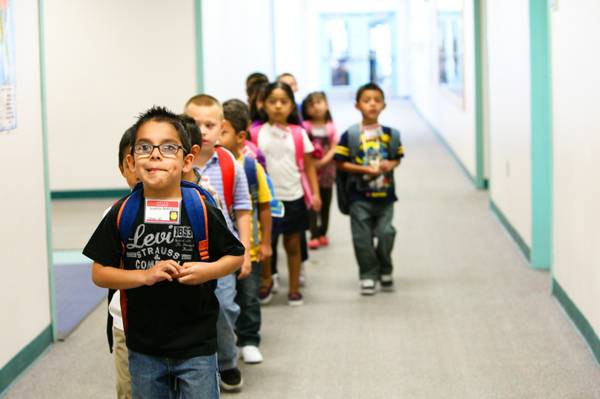Unless something changes at the Legislature, some parents will have to pay $3,200 for their child’s full-day kindergarten class in the Clark County School District next school year.
At the same time, other parents won’t have to pay to send their children to full-day kindergarten in the district.
“It’s unfair,” Sen. Debbie Smith, D-Reno, said. “We basically have a private school system within our public school system. ... I think it’s a huge inequity, and I personally think it shouldn’t be allowed.”
The two-tiered system sets the School District up for “some litigation risks,” said Sylvia Lazos, a UNLV law professor.
The system could be challenged in court, she said.
The state’s constitution says says that “the Legislature shall provide for a uniform system of common schools” and that the Legislature must fund schools before spending money on anything else. The Legislature, in partnership with local governments, must specifically pay for the “operation of the public schools in the state for kindergarten through grade 12.”
But a conflicting choice — the state level versus the district level — sets up a system of haves and have-nots.
Gov. Brian Sandoval wants to expand subsidized full-day kindergarten to the schools with the highest numbers of students living in poverty. At the same time, the district is allowing tuition-based, full-day kindergarten at 53 schools that don’t qualify for state funding but have enough classroom space to accommodate the students.
Smith said the “pay for K” programs leave lower middle-class families left out. The state subsidizes the poorest students while wealthier families can afford $3,200 for full-day kindergarten.
But at elementary schools such as John R. Hummel in Las Vegas, the “pay for K” program could well be unaffordable for some families in the school’s boundaries.
That’s because the boundary includes areas where median household incomes are within the $60,000-$65,000 range and other areas where they are in the $30,000-$35,000 range, according to U.S. Census data.
Some of those families may not be able to afford to put more than 10 percent of their pre-tax income toward full-day kindergarten.
The district started this program during the 2004-05 school year with 12 schools offering tuition-based classes.
Eight school years later, the state is providing about 12,000 students at 100 schools with subsidized full-day kindergarten. The district is charging about 2,500 families $3,200 per child for full-day kindergarten at 50 schools, said Clark County School District lobbyist Joyce Haldeman.
Haldeman said the programs, which often just provide a class or two, have been so popular that the schools have had to use lottery systems to pick students.
The rest of the district’s 10,000 kindergarten students, including losers in the lottery, go to the typical half-day kindergarten.
“We’ve never looked at this in terms of a liability issue,” Haldeman said. “We’ve looked at how much good we can do for the most people with the money provided.”
The state currently pays $18.3 million for full-day kindergarten at 124 schools in Clark County. The governor’s budget adds full-day kindergarten to 75 more Clark County schools.
Approximately 4,800 more students will get full-day kindergarten under the program.
Unless legislators can find a way to pay for universal full-day kindergarten, the three-tiered system will remain when school begins this fall.


Join the Discussion:
Check this out for a full explanation of our conversion to the LiveFyre commenting system and instructions on how to sign up for an account.
Full comments policy